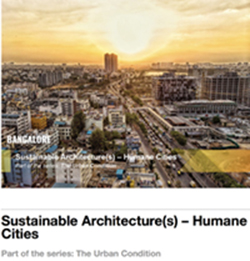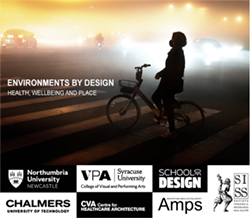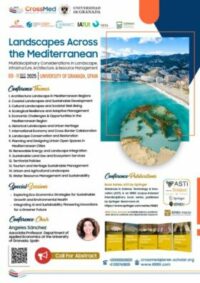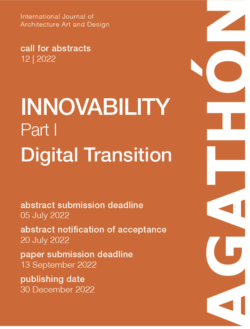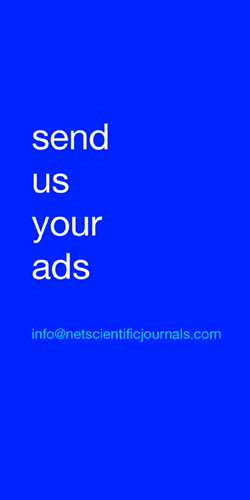ISSN (online): 2624-6511
Call of the Journal:
Mar
2021
Apr
2021
To meet the exceedingly increasing food demands of the world, it is imperative to utilize digital agriculture to its fullest extent for an improved and cost-efficient crop production method through timely decision making and conserving natural resources. To that end, it is vital to achieve a ubiquitous connectivity on farms using Internet of Things and Underground Wireless Communications. The Internet of Underground Things can be classified into various categories. Some of them, for example, include environment monitoring, such as digital agriculture and landslide monitoring. Digital agriculture is defined by International Society of Precision Agriculture (ISPA) as a management strategy that gathers, processes, and analyzes temporal, spatial, and individual data and combines them with other information to support management decisions according to estimated variability for improved resource use efficiency, productivity, quality, profitability, and sustainability of agricultural production. The communication medium in the Internet of Things in Digital Agriculture is significantly different from that of conventional wireless networks. Therefore, signal propagation in a soil medium needs further empirical investigations and modeling. In this regard, energy-efficient sensing and underground electromagnetic (EM) wave propagation systems are needed in the field of digital agriculture. Moreover, there is a lack of detailed measurements for wireless underground channel. Many challenges exist, experienced in the development of power-efficient underground communication, which also hinders the protocol development in IoT at higher layers. The aim of this Special Issue is to solicit papers from academia and industry researchers with original and innovative works on all aspects of Internet of Things in Digital Agriculture, including IoT sensing and wireless communications systems, characterization of soil medium (e.g., soil texture and moisture and irregular soil surfaces), antenna radiations considering burial depth, antenna design, and operating frequency, and studies of spatiotemporal factors of a field leading to a unique correlation of the communication system with digital agriculture. Submissions should be original papers and should not be under consideration in other publications.
Keywords: Digital agriculture; Internet of Things; Wireless Underground Communications; Soil sensing; Channel modeling; Subsurface antennas.
Internet of Things in digital agriculture
To meet the exceedingly increasing food demands of the world, it is imperative to utilize digital agriculture to its fullest extent for an improved and cost-efficient crop production method through timely decision making and conserving natural resources. To that end, it is vital to achieve a ubiquitous connectivity on farms using Internet of Things and Underground Wireless Communications. The Internet of Underground Things can be classified into various categories. Some of them, for example, include environment monitoring, such as digital agriculture and landslide monitoring. Digital agriculture is defined by International Society of Precision Agriculture (ISPA) as a management strategy that gathers, processes, and analyzes temporal, spatial, and individual data and combines them with other information to support management decisions according to estimated variability for improved resource use efficiency, productivity, quality, profitability, and sustainability of agricultural production. The communication medium in the Internet of Things in Digital Agriculture is significantly different from that of conventional wireless networks. Therefore, signal propagation in a soil medium needs further empirical investigations and modeling. In this regard, energy-efficient sensing and underground electromagnetic (EM) wave propagation systems are needed in the field of digital agriculture. Moreover, there is a lack of detailed measurements for wireless underground channel. Many challenges exist, experienced in the development of power-efficient underground communication, which also hinders the protocol development in IoT at higher layers. The aim of this Special Issue is to solicit papers from academia and industry researchers with original and innovative works on all aspects of Internet of Things in Digital Agriculture, including IoT sensing and wireless communications systems, characterization of soil medium (e.g., soil texture and moisture and irregular soil surfaces), antenna radiations considering burial depth, antenna design, and operating frequency, and studies of spatiotemporal factors of a field leading to a unique correlation of the communication system with digital agriculture. Submissions should be original papers and should not be under consideration in other publications.
Keywords: Digital agriculture; Internet of Things; Wireless Underground Communications; Soil sensing; Channel modeling; Subsurface antennas.
Inspec (IET), CLOCKSS (Digital Archive), e-Helvetica (Swiss National Library Digital Archive), Academic OneFile (Gale/Cengage Learning), Google Scholar, J-Gate (Informatics India), Science In Context (Gale/Cengage Learning).
Info at: www.mdpi.com/journal/smartcities/apc
Guest Editor
Dr. Abdul Salam


